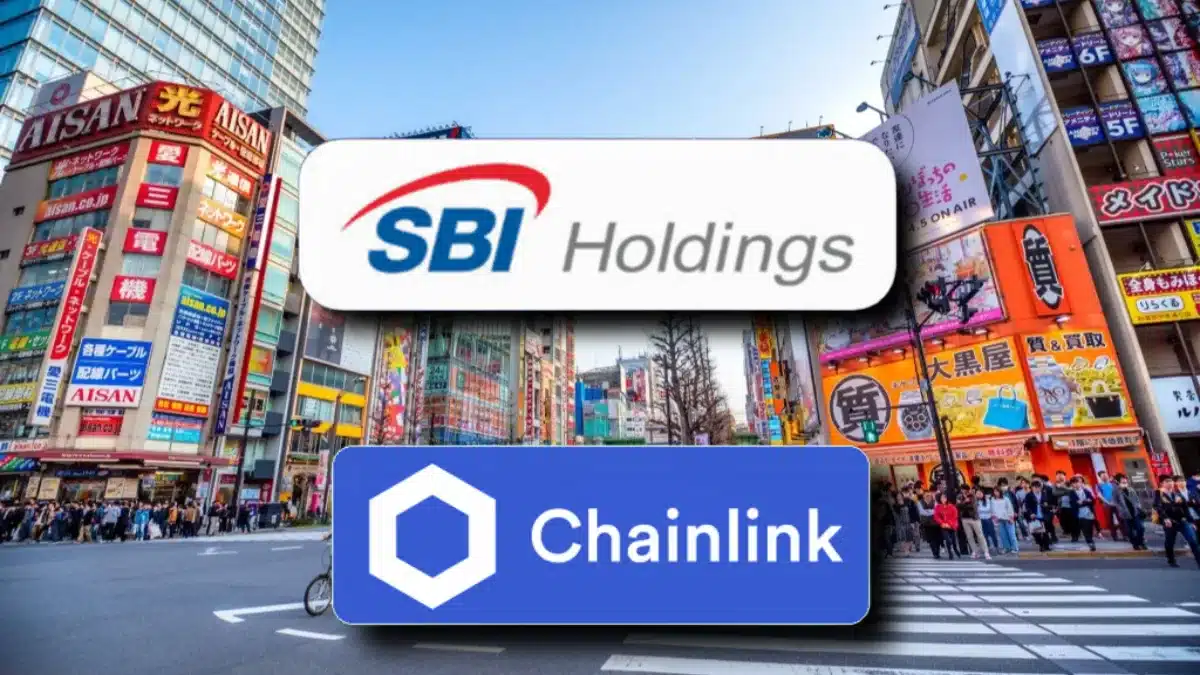- Japan’s SBI Digital Markets selected Chainlink’s Cross-Chain Interoperability Protocol (CCIP) as its exclusive infrastructure for secure token transfer.
- Despite speculation, analysts and XRP supporters clarified that SBI’s partnership with Chainlink complements, not replaces, Ripple.
- The move underscores a multi-blockchain future, where Ripple handles liquidity and settlement while Chainlink powers interoperability and privacy.
Japan’s SBI Digital Markets (SBIDM), the digital asset arm of SBI Group, has announced a strategic partnership with Chainlink Labs, selecting its Cross-Chain Interoperability Protocol (CCIP) as the exclusive infrastructure for its expanding digital assets platform.
According to Chainlink’s official statement, the collaboration will allow SBIDM to securely transfer tokenized assets across both public and private blockchains while maintaining privacy through CCIP Private Transactions.
The platform will now offer a full end-to-end lifecycle for digital assets, from compliant issuance and purchase to settlement and secondary trading across jurisdictions.
Speculation Over Ripple’s Future Role
The announcement immediately sparked speculation within the crypto community about whether SBI Group, one of Ripple’s most prominent partners and investors, might be shifting away from XRP and the XRP Ledger (XRPL).
Some commentators suggested that the adoption of Chainlink infrastructure could indicate a move toward interoperability solutions outside Ripple’s ecosystem. Crypto commentator Fishy Catfish wrote,
“SBI, the largest external investor in Ripple, is adopting Chainlink as its exclusive infrastructure solution… $XRP, as a bank-themed meme coin bridge, is an obsolete concept from a past generation.”
Also Read: Ripple’s IPO Value Tied to XRP Market Price? Researcher Explains How
SBI, the largest external investor in Ripple, is adopting Chainlink as its exclusive infrastructure solution to power its digital assets platform.
The world’s largest institutions are building with Chainlink infrastructure to shape the future of this industry. $XRP, as a… https://t.co/0gc9SrQPYn
— Fishy Catfish (@CatfishFishy) November 6, 2025
XRP Community Pushes Back Against the Narrative
Members of the XRP community were quick to correct what they viewed as misinformation about SBI’s relationship with Ripple. User Shaxrpie explained that SBI Digital Markets’ use of Chainlink does not overlap with Ripple’s domain:
“They’re using Chainlink as a cross-chain solution. That’s not what the XRPL is built to solve. More than one blockchain will power the financial system. XRPL will be the main settlement layer — like it or not.”
Another user, iXRPP, added further clarity, noting the distinction between SBI Group and its digital markets subsidiary: “SBI Holdings is the parent company of SBIDM. SBI still works with XRP and has invested in Ripple. SBIDM’s integration of Chainlink complements this — not replaces it.”
Complementary Technologies, Not Competition
Industry analysts point out that the partnership does not necessarily signal a “breakup” between SBI and Ripple but rather a broadening of infrastructure capabilities.
Ripple’s XRP Ledger focuses on real-time settlements and liquidity bridging, while Chainlink’s CCIP enables secure cross-chain interoperability, two functions that can coexist within a multi-layered financial architecture.
SBI Group’s dual involvement reflects a pragmatic approach: combining Ripple’s settlement efficiency with Chainlink’s interoperability and data privacy tools to strengthen its position in institutional onchain finance.
Conclusion: A Multi-Chain Future for Institutional Finance
The SBI–Chainlink collaboration highlights a key trend in digital finance: interconnected ecosystems built across multiple blockchains. Rather than displacing XRP, Chainlink’s integration may serve as a complementary layer, enhancing SBI’s overall digital asset infrastructure.
With SBI’s continued investment in Ripple and the new Chainlink partnership, the conglomerate appears poised to leverage both technologies in shaping the future of tokenized finance across Asia and Europe.
Also Read: Ripple Secures $500 Million Investment, Valued at $40 Billion Globally

